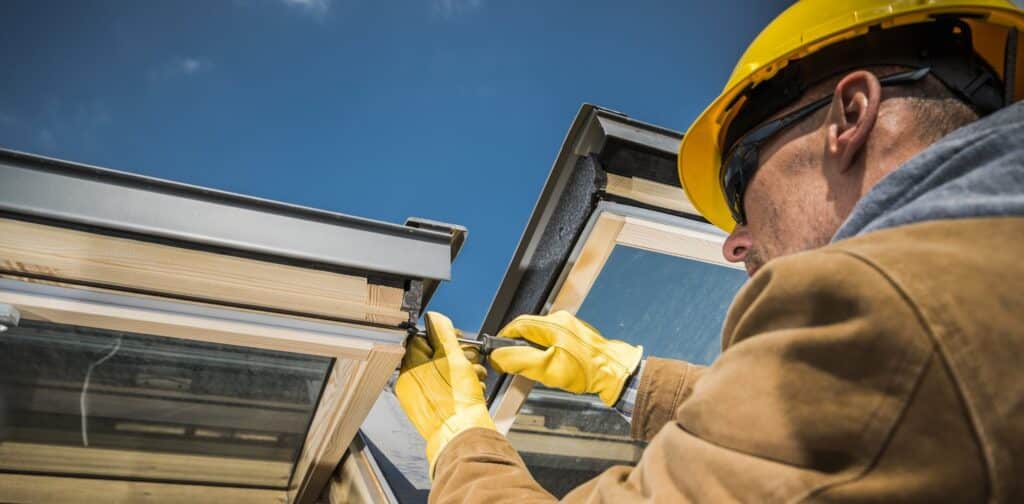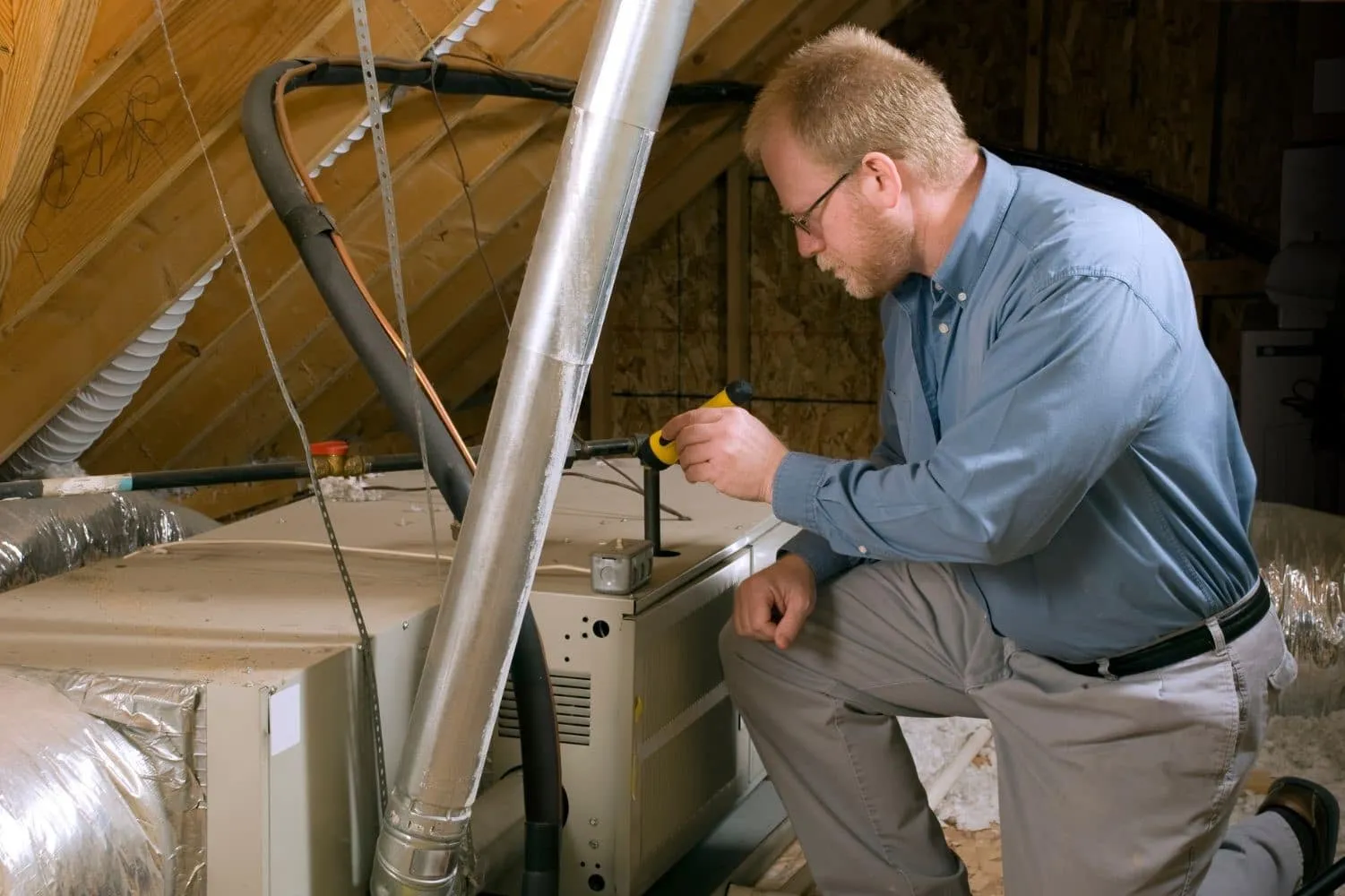Omaha gets an average of 28 inches of snow per year. On top of that, Omaha also has a winter weather menu that includes artic temps, freezing rain and wind chills that call for staying inside. To help you stay toasty, here’s your ultimate Omaha winterization guide, complete with tips to save money, info on helpful programs and even ways to fund those winterization projects.
Step 1: seal those drafts
Just like a coat with holes won’t keep you very warm, a drafty house will let precious heat escape—which means higher energy bills. To mend those drafts, head over to your local hardware store and grab a tube of caulk and some weatherstripping. Then follow our list to become a home-sealing superhero.
- Windows: Carefully inspect the frames for any cracks or gaps. Apply caulk to seal up those openings and add weatherstripping around the edges for extra protection.
- Doors: The biggest culprit is usually the gap at the bottom of the door. Installing door sweeps can block out the chilly air.
- Hidden Trouble Spots: Drafts can lurk in unexpected places, so be thorough. Check around electrical outlets and light switches, places where pipes or wires enter your home, and attic hatches or basement doors.
Step 2: insulate, insulate, insulate
Think of insulation as a cozy blanket for your house. The thicker the blanker, the warmer—and more energy efficient—your home will be.
- Attic: Heat rises, which means your attic can be a major escape route for warmth. Make sure you have enough insulation to keep that heat from vanishing into thin air. You can add more yourself (if you’re feeling handy) or hire a professional.
- Walls: If your home is older, it might be lacking in the wall insulation department. This can be a bigger project, but it’s a game-changer when it comes to saving energy and staying cozy.
- Crawl Space: Don’t neglect your crawl space! Insulating this often-forgotten area can also help prevent heat loss and keep your floors warmer.
American National Bank can help finance winterization with a HELOC.
Home equity loans and home equity lines of credit (HELOC) are great ways to fund your home improvement projects. Winterization can save you hundreds each year and thousands over the lifetime of your home.

Step 3: give your furnace some TLC
Make sure your furnace is ready to put in the hours during Omaha’s frosty temps to keep you and your family warm.
- Schedule a tune-up: Get your furnace inspected and cleaned by a qualified technician before the cold weather hits (OPPD can provide a rebate for the maintenance). Technicians can spot potential problems before they turn into costly repairs.
- Change your filters: Inspect your filters monthly during the winter. Dirty filters make your furnace work harder, which means higher energy bills. Ensure you use the correct filter size and type for your furnace. Check your owner’s manual or ask your HVAC technician for guidance.
- Consider a programmable thermostat: Investing in a programmable thermostat allows you to set different temperatures for different times of the day, saving you money when you’re away or asleep.
Step 4: prevent frozen pipes
Pipes that are exposed to freezing temperatures can freeze, expand and burst. It’s a headache that can be avoided with a little preventative maintenance.
- Insulate exposed pipes: Wrap pipes in insulation, especially in unheated areas like crawl spaces, attics, garages and exterior walls. You can find pipe insulation sleeves at most hardware stores. For particularly vulnerable pipes, consider using heat tape. This electric heating element wraps around the pipe and provides extra warmth.
- Let faucets drip: During extremely cold weather, allow a slow drip of water from faucets to prevent pipes from freezing. This helps keep the water moving in the pipes, making it harder for ice to form.
- Know your shut-off valve: In the unfortunate event that a pipe does freeze, you need to act fast! Knowing the location of your main water shut-off valve can save you from a major flooding disaster. Once you locate the shut-off valve, test it and make sure everyone in your household knows where it is and how to use it.
Step 5: invest in energy efficiency
Want to save money on your energy bills year after year and maybe even increase the value of your home? Then, it’s time to invest in energy-efficient upgrades. Consider these more significant home improvement projects:
- Upgrade your windows: Old, drafty windows are a major source of heat loss. Replacing them with energy-efficient models can make a big difference. ENERGY STAR certified windows meet strict efficiency guidelines set by the EPA. They can help you save anywhere from 7% to 15% on your heating and cooling costs.
- Level up your home’s insulation: Older homes may lack proper insulation. Adding insulation to your attic or walls can significantly improve its energy efficiency. For attics, you can choose from various types of insulation, including blown-in, batts and rolls. Wall insulation can be more involved, but it’s worth the investment, especially if your home is older.
- Install solar panels: Harness the sun’s power to reduce your reliance on traditional energy sources. Installing solar panels on your roof allows you to generate your own electricity, saving you money on your electric bill. While the upfront cost of solar panels can be significant, you’ll see savings on your energy bills for years to come.
Step 6: learn about tax incentives
Thanks to the Inflation Reduction Act of 2022, homeowners can now use federal tax credits for energy efficient upgrades. For heat pump technology, these credits can go toward 30% of a purchase (up to $2,000). Additionally, for improvements such as windows, insulation, furnaces and central air, homeowners can claim 30% (up to $1,200) of the purchase price.

Get started with a home equity loan or line of credit.
Winterizing your home is about protecting your investment and creating a comfortable haven for you and your family. A home equity loan or home equity line of credit (HELOC) makes it easier to tackle one or more large projects.


